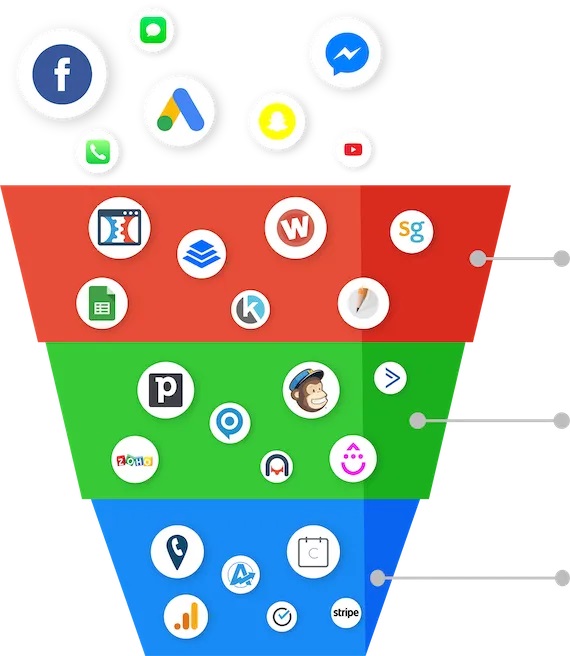List Building and Lead Generation What Is The Relationship
Fundamentals of Lead Generation
Lead generation is the initial step in the journey of acquiring customers.
It involves attracting potential customers to your brand or product and persuading them to provide their contact information, typically through a form on a website, landing page, or social media platform.
The aim is to create a pipeline of potential customers who have shown some level of interest in what you’re offering.
This process is crucial as it fills the top of the sales funnel with ‘leads’—individuals or organizations that may eventually become paying customers.
The tactics employed in lead generation are varied and depend largely on the type of business and its audience.
They can range from inbound methods like content marketing, SEO, and social media engagement, to outbound techniques such as cold emailing or calling, direct mail, and paid advertising.
The key is to offer something of value—be it information, a sample product, a free trial, or a solution to a problem—in exchange for the prospect’s contact information.
This value exchange is the cornerstone of effective lead generation: it’s not merely about collecting as many email addresses as possible, but rather about gathering contact information from individuals genuinely interested in your offerings.
Synergy with List Building

While lead generation is about attracting potential customers, list building takes the process a step further by organizing and segmenting these leads for targeted communication.
The relationship between the two is symbiotic: effective lead generation provides the raw material (leads) for list building, while an organized list amplifies the effectiveness of lead generation efforts by enabling personalized, targeted outreach.
Once a lead is generated, it’s added to a list, marking the beginning of a more personalized relationship.
This list then becomes a valuable asset for the business, allowing for direct communication with prospects through email marketing campaigns, newsletters, or personalized offers.
The goal of list building, therefore, is not just to grow the list in size, but to enhance the quality and relevance of the communication, fostering a deeper connection with each lead.
This is where segmentation comes into play, dividing the list into different groups based on criteria such as demographics, behavior, or where they are in the sales funnel.
This targeted approach ensures that leads receive content and offers that are relevant to their interests and needs, increasing the likelihood of conversion.
Developing a Unified Strategy
Integrating lead generation with list building requires a strategic approach that aligns with the overall marketing and business objectives.
This strategy should outline the types of leads needed, the information required from them, and the methods used to capture and nurture these leads.
It also involves setting clear goals and metrics to measure the success of lead generation and list-building efforts, such as conversion rates, engagement rates, and return on investment (ROI).
A unified strategy considers the customer journey from first contact through to conversion and beyond, ensuring that every touchpoint is an opportunity to engage and add value.
It also involves continuously testing and refining lead generation and list-building techniques to improve results over time.
By understanding the interplay between lead generation and list building, businesses can create a more cohesive and effective marketing approach that drives growth and builds lasting customer relationships.
With this comprehensive view, marketers can better appreciate the intrinsic link between gathering leads and nurturing them into loyal customers.
This foundational understanding is crucial for new affiliate marketers who are establishing their strategies in a competitive landscape.
Every business, regardless of size or industry, should prioritize building and maintaining a list of contacts.
This list represents not just a set of names and email addresses, but a valuable asset comprising individuals who have expressed interest in your brand or offerings.
The importance of this asset cannot be overstated; it serves as a direct line to your potential and existing customers, enabling personalized communication and fostering relationships that can drive growth and profitability.



